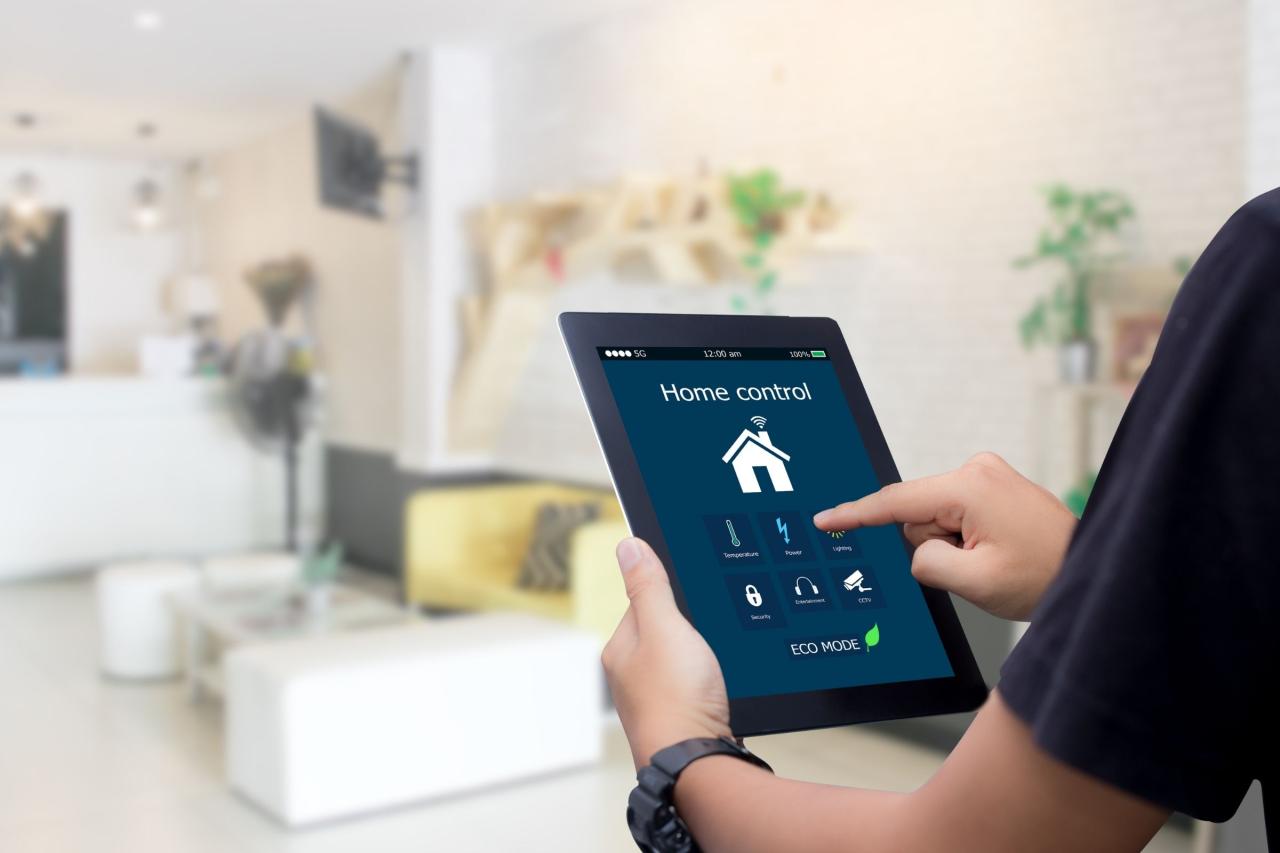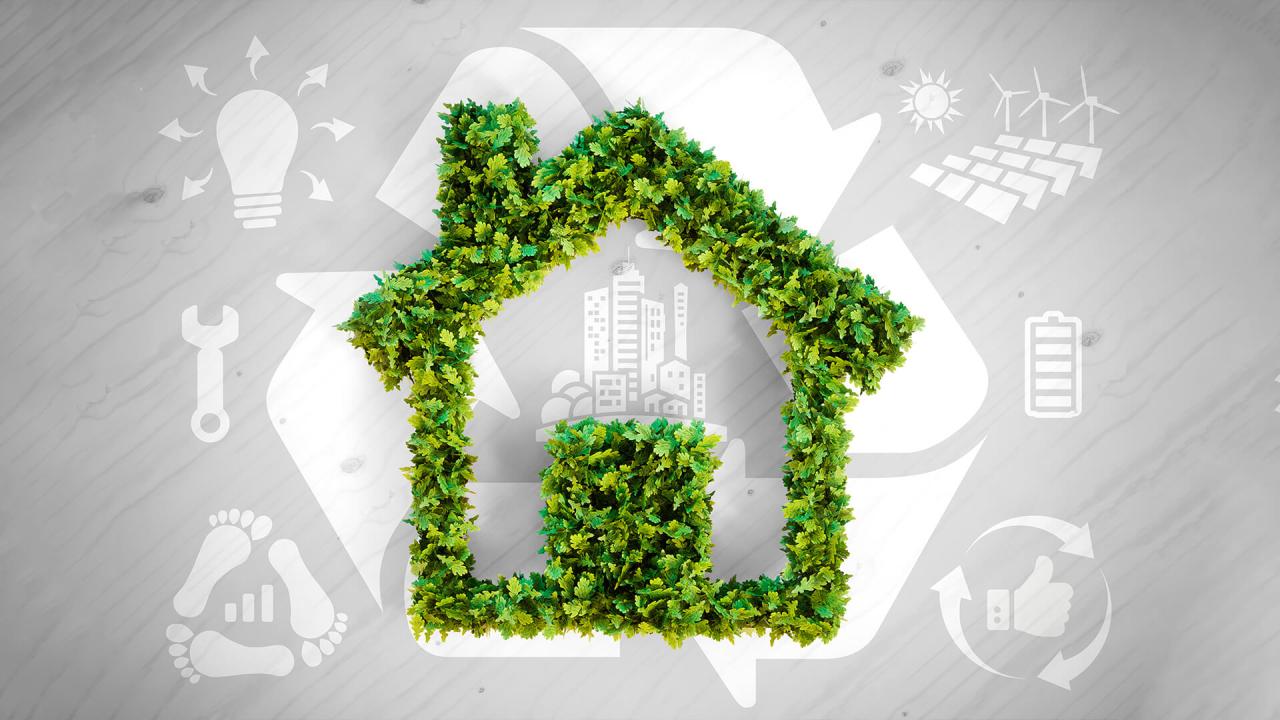The Essence of Smart Home Integration

At its core, smart home integration involves connecting various devices and systems within a residence to a central network, allowing them to communicate and be controlled remotely or autonomously. This interconnectivity is what truly defines a “smart” home.
A. Core Components of a Smart Home Ecosystem
- Central Hub or Controller: This is the brain of the smart home, acting as the central communication point for all connected devices. It can be a dedicated hardware device (like a smart speaker, a hub from a specific brand like Samsung SmartThings or Apple HomeKit), or software-based (like a smartphone app). The hub interprets commands, automates routines, and connects devices to the internet.
- Network Connectivity: A robust and reliable home network (typically Wi-Fi, but also Z-Wave, Zigbee, or Bluetooth) is essential for communication between devices and with the internet. Strong internet speed ensures seamless operation and responsiveness for cloud-based smart features.
- Smart Devices and Sensors: These are the individual components that perform specific functions. They include:
- Lighting: Smart bulbs, switches, and dimmers that can be controlled remotely, scheduled, or adjusted based on occupancy.
- Thermostats: Devices that learn preferences, adjust temperatures based on presence, and can be controlled remotely for energy efficiency.
- Security Systems: Smart locks, cameras, motion sensors, door/window sensors, and alarm systems that offer remote monitoring and alerts.
- Appliances: Connected refrigerators, ovens, washing machines, and dishwashers that offer remote control, diagnostics, and smart features (e.g., reordering groceries).
- Entertainment Systems: Smart TVs, sound systems, and streaming devices that can be integrated for voice control or multi-room audio.
- Shades/Blinds: Automated window coverings that can adjust for light, privacy, or energy efficiency.
- Voice Assistants: Devices like Amazon Echo, Google Home, or Apple HomePod that allow voice control over other smart devices and provide information.
- Software and Applications: Smartphone apps or web interfaces provide the primary means for users to control, monitor, and configure their smart home devices, create automation routines, and receive alerts.
B. Communication Protocols
Different smart devices use various communication protocols to talk to each other and the hub. Understanding these helps in ensuring compatibility and system stability.
- Wi-Fi: Common for many smart devices due to its widespread availability and bandwidth, but can consume more power and create network congestion if too many devices are connected.
- Bluetooth: Suitable for short-range communication, often used for direct device-to-phone connections or small, localized networks. Lower power consumption.
- Z-Wave: A mesh network protocol designed specifically for smart home devices, known for low power consumption, long range, and strong security. Ideal for sensors and locks.
- Zigbee: Another mesh network protocol, similar to Z-Wave, offering low power consumption and high reliability, often used for lighting and sensors.
- Thread: An IP-based mesh networking technology designed for low-power IoT devices, aiming to simplify connectivity and enhance security. It’s gaining traction with Matter.
- Matter: A new open-source connectivity standard backed by major tech companies (Apple, Google, Amazon, Samsung) aiming to unify smart home devices across different brands and protocols, promising greater interoperability and ease of use. This is a game-changer for simplified integration.
C. Levels of Smart Home Integration
- Basic (Individual Devices): Control of single devices (e.g., one smart bulb, one smart plug) via their dedicated app. Limited automation.
- Intermediate (Basic Automation): Devices from a single ecosystem (e.g., all Google Nest devices) work together for simple routines (e.g., lights turn on when motion is detected).
- Advanced (Cross-Platform Automation): Devices from different brands and protocols communicate and automate complex routines via a central hub or universal platform (e.g., IFTTT, Home Assistant, Hubitat), creating truly intelligent scenarios.
- Fully Integrated (AI-Powered and Predictive): The highest level, where the home learns occupant behaviors, anticipates needs, and automates functions proactively using AI and machine learning, often without direct user input.
Benefits of Smart Home Integration
The advantages of smart home integration extend far beyond mere novelty, offering tangible improvements to daily living and long-term value.
A. Enhanced Convenience and Comfort
- Centralized Control: Manage all your devices from a single app, voice command, or touch panel, eliminating the need for multiple remotes or manual adjustments.
- Automated Routines: Set up schedules or triggers (e.g., lights turn on at sunset, thermostat adjusts when you leave for work, coffee maker starts with your alarm) that simplify daily tasks and save time.
- Personalized Environments: Adjust lighting, temperature, and entertainment settings to your precise preferences, creating a truly tailored living experience.
- Remote Access: Control your home from anywhere in the world using your smartphone. Turn off forgotten lights, adjust the thermostat before you arrive, or check security cameras while on vacation.
- Voice Control: Command devices hands-free using voice assistants, making tasks effortless and accessible for everyone.
B. Improved Security and Peace of Mind
- Remote Monitoring: View live feeds from security cameras, receive alerts for unusual activity (e.g., motion detection, opened doors/windows), and monitor your home’s status from afar.
- Smart Locks: Grant or revoke access remotely, receive notifications when doors are locked/unlocked, and eliminate the need for physical keys, enhancing security and convenience.
- Automated Security Responses: Integrate systems so that if a smoke alarm goes off, lights can automatically turn on and doors can unlock for emergency access, or if a security breach is detected, the alarm blares and cameras start recording.
- Deterrence: Automated lighting or simulated occupancy features can deter potential intruders by making it appear as if someone is always home.
- Alerts for Emergencies: Receive instant notifications for water leaks, smoke, carbon monoxide, or extreme temperatures, allowing for rapid response to prevent significant damage.
C. Significant Energy Efficiency and Cost Savings
- Smart Thermostats: Learn occupancy patterns, adjust temperatures automatically, and allow remote control, leading to substantial savings on heating and cooling bills by preventing wasted energy.
- Smart Lighting: Program lights to turn off when rooms are empty, dim based on natural light, or operate on schedules, significantly reducing electricity consumption.
- Appliance Monitoring: Track energy usage of individual appliances to identify energy hogs and make more informed decisions about usage patterns.
- Optimized Resource Management: Integration can optimize the use of water heaters, irrigation systems, and other high-consumption devices, leading to lower utility bills and reduced environmental impact.
- Reduced Carbon Footprint: By consuming less energy and resources, smart homes contribute to a smaller carbon footprint, aligning with global sustainability goals.
D. Enhanced Home Value and Market Appeal
- Increased Resale Value: Homes with pre-installed and well-integrated smart home systems are increasingly appealing to buyers, often commanding a higher resale value compared to non-smart homes. They are perceived as modern and future-proof.
- Attracting Younger Buyers: Millennials and Gen Z, who grew up with technology, often expect smart features in their homes. These features can be a significant draw for these crucial demographic segments.
- Competitive Edge for Rentals: For rental properties, smart home features can attract tenants, justify higher rents, and provide landlords with better control and monitoring capabilities.
- Modern Aesthetic: The sleek design of many smart devices contributes to a modern and sophisticated aesthetic within the home.
Current Trends in Smart Home Integration

The smart home landscape is constantly evolving, with several key trends shaping its future.
A. Interoperability and Ecosystem Unification (Matter Standard)
- The Rise of Matter: The introduction of the Matter standard is a game-changer, promising to simplify smart home integration by allowing devices from different manufacturers to communicate seamlessly. This will reduce compatibility headaches for consumers and accelerate adoption.
- Platform Agnostic Control: Consumers want to choose devices based on features, not just brand loyalty. Matter and similar initiatives aim to enable control of all devices through their preferred voice assistant (Google Assistant, Alexa, Siri) or smart home app, regardless of the device’s original ecosystem.
- Thread Network Expansion: As a low-power, self-healing mesh network, Thread is gaining prominence as a reliable underlying technology for Matter-compatible devices, ensuring robust connectivity.
B. AI and Predictive Intelligence
- Learning and Adapting Homes: Future smart homes will increasingly use AI and machine learning to learn occupant habits, anticipate needs, and proactively adjust settings (e.g., pre-heating water for showers, adjusting lighting for moods) without explicit commands.
- Personalized Wellness Environments: AI will integrate data from wearables and other health monitors to optimize indoor climate, lighting, and air quality for individual well-being, promoting better sleep or focus.
- Predictive Maintenance: AI-powered systems will analyze data from appliances and home infrastructure to predict potential failures, allowing for proactive maintenance and preventing costly breakdowns.
C. Health, Wellness, and Sustainability Focus
- Advanced Air Quality Monitoring: Beyond basic sensors, smart homes are integrating sophisticated air quality monitors that detect VOCs, pollen, and other pollutants, automatically activating air purifiers or adjusting ventilation.
- Water Leak Detection and Shutoff: Smart water sensors that can detect leaks and automatically shut off the main water supply are becoming essential for preventing costly water damage.
- Energy Optimization and Management: Deeper integration with utility grids for demand response programs, solar panel optimization, and smart battery storage will make homes even more energy efficient and resilient.
- Circadian Lighting: Lighting systems that automatically adjust color temperature and brightness throughout the day to mimic natural light cycles, supporting occupants’ circadian rhythms for better sleep and mood.
D. Enhanced Security and Privacy
- Facial Recognition and Advanced Biometrics: More sophisticated smart locks and security cameras are incorporating facial recognition for seamless entry and advanced intruder detection.
- Edge Computing: Processing data on the device itself (“at the edge”) rather than sending everything to the cloud enhances privacy, reduces latency, and improves security for sensitive data like video feeds.
- User-Centric Privacy Controls: As smart homes become more pervasive, consumers will demand greater transparency and control over their data, leading to more robust privacy settings and clear data usage policies.
Challenges and Considerations for Smart Home Integration
Despite the undeniable benefits, building a truly integrated smart home presents several challenges that users and developers must address.
A. Interoperability and Compatibility:
- Fragmented Ecosystems: The biggest hurdle has been the lack of universal standards, forcing consumers to choose between incompatible ecosystems or rely on complex workarounds. While Matter aims to solve this, it will take time for full adoption.
- Device-Specific Apps: Many devices still require their own dedicated apps, leading to “app fatigue” and a disjointed user experience.
B. Cost and Complexity:
- Upfront Investment: While long-term savings exist, the initial cost of purchasing and installing numerous smart home devices can be substantial, particularly for whole-home integration.
- Installation and Setup: Depending on the complexity, setting up and configuring a truly integrated smart home can be challenging for non-technical users, sometimes requiring professional installation.
- Troubleshooting: When a device goes offline or a routine fails, diagnosing and fixing issues can be frustrating and time-consuming.
C. Security and Privacy Concerns:
- Cybersecurity Vulnerabilities: Every connected device is a potential entry point for cyberattacks. Poorly secured devices can expose personal data or provide access to the home network.
- Data Collection and Usage: Smart home devices collect vast amounts of data about user habits, routines, and presence. Concerns about how this data is stored, used, and shared by manufacturers and third parties are paramount.
- Voice Assistant Privacy: While convenient, concerns exist about voice assistants “always listening” and the potential for recordings to be stored or analyzed.
D. Internet Reliability and Power Dependency:
- Reliance on Internet Connection: Many smart home devices require a stable internet connection to function fully. Internet outages can render some smart features useless, reverting devices to basic manual operation.
- Power Outages: In the event of a power outage, most smart devices will cease to function unless they have battery backups, impacting security, lighting, and other essential services.
Strategic Approaches for Successful Smart Home Integration
To overcome challenges and maximize benefits, a thoughtful and systematic approach is crucial when embarking on smart home integration.
A. Plan and Prioritize Your Needs
- Define Your Goals: Before buying devices, identify what you want to achieve: enhanced security, energy savings, convenience, or a combination. This will guide your choices.
- Start Small and Expand: Don’t try to automate everything at once. Begin with a few key devices (e.g., smart thermostat, a few smart lights, a security camera) and gradually expand as you become comfortable and identify more needs.
- Research Compatibility: Until Matter is fully pervasive, prioritize devices that are compatible with your chosen ecosystem (e.g., Google Home, Alexa, Apple HomeKit) or a universal hub to ensure seamless integration.
B. Prioritize Security and Privacy
- Strong Network Security: Use a strong, unique password for your Wi-Fi network and enable WPA2/WPA3 encryption. Consider a separate guest network for smart devices.
- Regular Software Updates: Keep all your smart home devices and their corresponding apps updated to ensure you have the latest security patches.
- Review Privacy Policies: Read and understand the privacy policies of smart home device manufacturers and services to know what data they collect and how it’s used. Adjust privacy settings where possible.
- Use Two-Factor Authentication (2FA): Enable 2FA for all your smart home accounts to add an extra layer of security.
C. Invest in a Reliable Foundation
- Robust Home Network: Ensure you have a reliable router and sufficient Wi-Fi coverage throughout your home. Consider mesh Wi-Fi systems for larger properties.
- Choose a Compatible Hub: Select a central hub or platform that supports the communication protocols of the devices you plan to use (e.g., Z-Wave, Zigbee, Thread).
- Professional Installation (if needed): For complex whole-home systems or if you’re uncomfortable with DIY, consider hiring a professional smart home integrator for installation and setup.
D. Embrace Automation and Customization
- Experiment with Routines: Use the automation features in your smart home app or hub to create routines that simplify daily tasks and enhance comfort (e.g., “Good Morning” routine, “Leaving Home” routine).
- Personalize Settings: Adjust settings for lighting, temperature, and music to match your personal preferences and schedule.
- Monitor Performance: Regularly check energy usage reports from your smart thermostat or energy monitoring devices to identify areas for further savings and optimization.
Conclusion
Smart home integration is no longer a luxury but an increasingly essential aspect of modern living, offering a powerful blend of convenience, security, efficiency, and sustainability. From voice-controlled lighting to AI-powered thermostats and robust security systems, the ability to connect and automate elements of our homes is transforming how we interact with our living spaces. While challenges related to interoperability and data privacy persist, the rapid advancements, particularly with unifying standards like Matter, promise a future of seamless and intuitive home intelligence. By understanding its core components, embracing its benefits, and adopting a strategic approach to implementation, homeowners can successfully navigate the exciting landscape of smart home technology, creating environments that are not only smarter but also more comfortable, secure, and truly aligned with the demands of future living. The future of the home is here, and it’s brilliantly connected.













